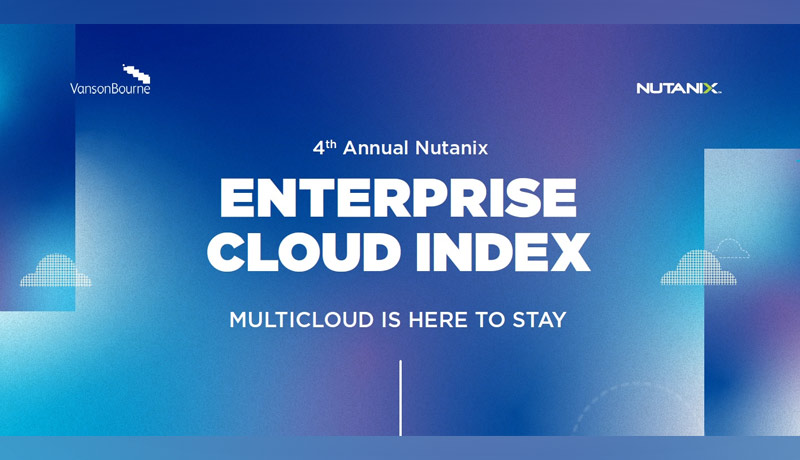Healthcare’s future with the multicloud adoption

Nutanix has released the healthcare findings of its worldwide Enterprise Cloud Index (ECI) survey and research study, which assesses enterprise progress with cloud adoption in the market.
According to the findings, healthcare businesses appear to be in the early stages of cloud adoption and lag behind the worldwide respondent average across industries. However, adoption is predicted to increase from 27% to 51% in the next three years, in keeping with the worldwide trend of moving to a multicloud IT architecture that includes both private and public clouds.
While multicloud adoption is increasing, the complexity of managing across cloud boundaries remains a significant problem for healthcare businesses, with 92 percent saying that success needs simplified administration across multicloud infrastructures. To solve the major concerns of interoperability, security, cost, and data integration, 90% of respondents feel that a hybrid multicloud architecture, an IT operating paradigm with multiple clouds, both private and public, with interoperability between them, is ideal.
“Multicloud is here to stay, but complexity and challenges remain as regulations drive many of healthcare organizations’ IT deployment decisions,” said Joseph Wolfgram, Healthcare CTO at Nutanix. “Regardless of where they are in their multicloud journeys, evolution to a hybrid multicloud IT infrastructure that spans a mix of private and public clouds with interoperability is underway and necessary for healthcare organizations to succeed.”
Healthcare survey respondents were asked about their current cloud challenges, how they’re running business applications now, and where they plan to run them in the future. Respondents were also questioned about the pandemic’s influence on recent, current, and future IT infrastructure decisions, as well as how IT strategy and priorities may alter as a result. Among the report’s key findings this year are:
- Top multicloud challenges include integrating data across clouds (49%), managing costs (48%), and performance challenges with network overlays (45%). While multicloud adoption is trending upwards, most healthcare organizations are struggling with the reality of operating across multiple clouds, private and public. Given that more than 84% say they currently lack the IT skills required to meet business demands, simplifying operations is likely to be a key focus for many in the year ahead. However, IT leaders are realizing that there is no one-size fits all approach to the cloud, making hybrid multicloud ideal according to the majority of respondents.
- Application mobility is top of mind. All healthcare organizations (100%) have moved one or more applications to a new IT environment over the last 12 months, likely moving applications out of legacy three-tier environments and into private clouds given healthcare’s above-average private cloud and traditional datacenter penetration. Yet, 80% of respondents agree that moving a workload to a new cloud environment can be costly and time-consuming. They cite security (48%) most often as the reason for the move, outpacing the global average (41%), followed by gaining control of the application (38%), and improving performance (36%).
- Focus on business continuity and disaster recovery is helping to drive cloud adoption. Due to being a highly regulated industry, healthcare organizations have been slower to embrace the public cloud as a main component of their IT environments for security reasons. However, healthcare IT professionals indicated an intent to use public cloud services as supplemental IT infrastructure to which they can fail over for improved business continuity levels and disaster recovery setups (BC/DR). In fact, they cited improving BC/DR most often as motivating their three-year plans to increase multicloud use (38%). Healthcare’s interest in boosting BC/DR could prove to be the impetus for greater public cloud acceptance, as this use case has a strong public cloud component, which could accelerate the industry’s general multicloud usage.
- Top healthcare IT priorities for the next 12 to 18 months include adopting 5G (47%) and AI/ML-based services (46%), and improving BC/DR (45%), and multicloud management (44%). Healthcare respondents also said that the COVID-19 pandemic has spurred them to increase their IT spending in certain areas such as bolstering security posture (62%), implementing AI-based self-service technology (60%), and upgrading existing IT infrastructure (48%).
